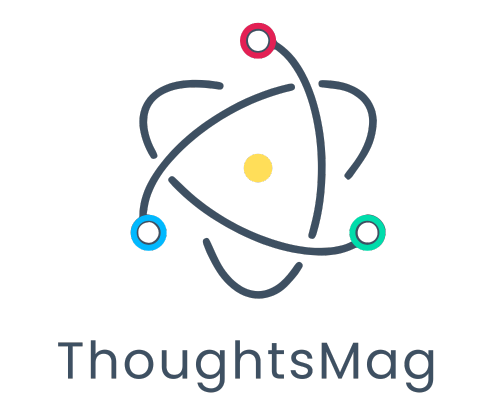Artificial Intelligence is transforming the way humans live, work, and communicate. From healthcare to finance, and from education to entertainment, its influence is expanding at an extraordinary pace. Many organizations now rely on AI-driven tools to automate processes, improve decision-making, and enhance customer experiences. While Artificial Intelligence is often portrayed as futuristic or even intimidating, it is already embedded in our daily lives. Voice assistants, predictive algorithms, chatbots, and self-driving cars all showcase how far this technology has advanced. This article explores the concept of intelligence, the methods and goals of Artificial Intelligence, current technologies, and the possibility of Artificial General Intelligence (AGI). Along the way, we will answer top questions and provide insights into how this innovation continues to shape our world.
Exploring Core Questions Around Artificial Intelligence
Introduction & Top Questions
Artificial Intelligence is often misunderstood due to the hype and speculation surrounding it. However, understanding its fundamentals requires answering some key questions. What exactly is Artificial Intelligence? How does it differ from human intelligence? What technologies drive it? And most importantly, what are the future implications for society and businesses? These questions guide not only academic research but also corporate investments and policymaking.
Today, businesses use Artificial Intelligence for everything from recommendation systems to fraud detection. Yet, many still wonder about its ethical risks and limitations. Another common question is whether AI will eventually replace human jobs or create new opportunities. As industries adopt automation, the debate over job displacement grows. Moreover, questions about trust and transparency arise when algorithms make decisions that affect human lives.
Therefore, before diving deeper into complex aspects of Artificial Intelligence, it is crucial to address these recurring questions. By exploring them systematically, we can separate myths from facts and provide readers with a balanced perspective. For a broader context, readers can also explore related discussions such as the benefits of artificial intelligence chatbots and how they enhance customer experiences.
What is Intelligence?
Intelligence, in its simplest form, refers to the ability to learn, reason, and adapt. Human intelligence involves complex processes such as memory, logic, emotional understanding, and creativity. When researchers attempt to replicate these traits in machines, they define it as Artificial Intelligence. However, the comparison is not straightforward. Human intelligence relies on consciousness and subjective experiences, whereas Artificial Intelligence focuses on computational efficiency and data-driven predictions.
In psychology, intelligence encompasses multiple dimensions, including linguistic, logical-mathematical, spatial, and interpersonal abilities. Similarly, Artificial Intelligence attempts to simulate these aspects through different technologies such as natural language processing, machine vision, and reinforcement learning. Yet, unlike humans, machines lack self-awareness or emotions, raising philosophical debates about the meaning of intelligence itself.
Understanding intelligence helps in clarifying what Artificial Intelligence can and cannot achieve. While machines can outperform humans in narrow tasks such as calculations or pattern recognition, they still lag behind in generalized reasoning and common sense. As researchers continue to improve AI models, the line between machine capability and human cognition becomes increasingly blurred. The concept also ties into Future Technologies that aim to extend human potential.
Modern Approaches Driving Artificial Intelligence
Methods and Goals in AI
The methods behind Artificial Intelligence are rooted in computer science, mathematics, and cognitive psychology. Machine learning, deep learning, and neural networks represent the most prominent approaches today. These methods allow systems to analyze large datasets, recognize patterns, and make predictions. For example, machine learning algorithms enable search engines to refine results, while deep learning powers facial recognition and speech synthesis.
The goals of Artificial Intelligence extend beyond mere automation. Researchers aim to create systems that can learn continuously, reason logically, and interact naturally with humans. These goals often fall into categories such as narrow AI and general AI. Narrow AI refers to specialized systems designed for specific tasks, such as language translation or recommendation engines. In contrast, general AI aims to replicate human-like intelligence that can apply knowledge across different domains.
In addition to functionality, the ethical and social goals of Artificial Intelligence are gaining attention. Questions about fairness, accountability, and transparency influence how AI systems are designed and deployed. By focusing on responsible AI development, industries can ensure that innovation benefits society as a whole. For practical examples, explore the applications across types of AI prompts that shape interactions between humans and machines.
AI Technology
AI technology covers a wide spectrum of tools and applications. At its core, AI relies on algorithms, computational power, and data availability. Cloud computing platforms have made AI more accessible, enabling businesses of all sizes to adopt machine learning models without building costly infrastructure. From predictive analytics to intelligent automation, AI technologies are driving digital transformation.
Key areas of AI technology include natural language processing (NLP), computer vision, and robotics. NLP allows machines to understand and generate human language, as seen in chatbots and virtual assistants. Computer vision enables applications such as facial recognition, medical imaging, and autonomous vehicles. Robotics combines AI algorithms with physical hardware, creating systems that can perform tasks ranging from warehouse operations to surgical assistance.
However, with these advances come challenges. Issues like data privacy, algorithmic bias, and energy consumption remain significant concerns. Companies must balance innovation with ethical responsibility, ensuring AI applications are trustworthy and sustainable. As technology evolves, platforms like Google AI Mode continue to push the boundaries of innovation, integrating intelligence into everyday tools and services.
Possibilities and Challenges of Advanced Artificial Intelligence
Is Artificial General Intelligence (AGI) Possible?
AGI represents the idea of machines that can perform any intellectual task a human can do. Unlike narrow AI, which specializes in specific domains, AGI would possess broad reasoning abilities and adaptability. Researchers often describe AGI as the ultimate goal of Artificial Intelligence, but achieving it remains uncertain. Despite progress in machine learning and deep learning, no existing system demonstrates true general intelligence.
The possibility of AGI raises philosophical and ethical questions. Would machines with general intelligence develop consciousness or self-awareness? If so, how would society regulate their actions and responsibilities? Some experts believe AGI is inevitable, given the pace of technological advancement. Others argue that human cognition is too complex to replicate fully in machines.
Moreover, the pursuit of AGI carries risks. A superintelligent system could surpass human control, leading to unintended consequences. For this reason, many researchers advocate for careful governance and international collaboration in AI development. Whether AGI becomes reality or remains a theoretical pursuit, it continues to inspire debates about the future of AI and its role in shaping humanity.
Conclusion
Artificial Intelligence is no longer a distant dream—it is a present reality shaping every aspect of modern life. From answering top questions to exploring its methods, goals, and technologies, AI demonstrates both potential and limitations. While narrow AI applications continue to flourish, the path to Artificial General Intelligence remains uncertain. Nevertheless, the journey toward intelligent machines highlights the creativity and ambition of human innovation.
Frequently Asked Questions About Artificial Intelligence
What are the main types of Artificial Intelligence?
Artificial Intelligence can be classified into three types: narrow AI, general AI, and superintelligent AI. Narrow AI focuses on specific tasks such as chatbots or recommendation systems. General AI aims to replicate human-like intelligence across multiple domains, while superintelligent AI refers to machines surpassing human intelligence altogether. At present, only narrow AI exists in real-world applications.
How is Artificial Intelligence used in everyday life?
Artificial Intelligence is embedded in tools we use daily. From voice assistants like Siri and Alexa to personalized recommendations on Netflix and e-commerce platforms, AI enhances convenience and efficiency. It is also used in navigation apps, fraud detection systems, and even medical diagnosis tools. These applications show how AI seamlessly integrates into routine activities.
Will Artificial Intelligence replace human jobs?
While Artificial Intelligence automates repetitive tasks, it also creates new opportunities. Certain industries may see job displacement, particularly in manufacturing and administrative roles. However, AI generates demand for new skills in data science, machine learning, and human-AI collaboration. Instead of complete replacement, AI is more likely to reshape the nature of work.
What are the ethical concerns of Artificial Intelligence?
Key ethical concerns include data privacy, algorithmic bias, lack of transparency, and potential misuse. Since AI decisions often impact human lives, it is vital to ensure fairness, accountability, and explainability in AI systems. Governments and organizations are working toward regulations that promote responsible AI practices, balancing innovation with public trust.
Is Artificial General Intelligence (AGI) achievable?
The concept of AGI, where machines think and reason like humans, is still theoretical. Despite advancements in deep learning and neural networks, no system has achieved true AGI. Some researchers believe it will be possible within decades, while others argue it may never be fully realized due to the complexity of human cognition. The debate continues among scientists and philosophers alike.






